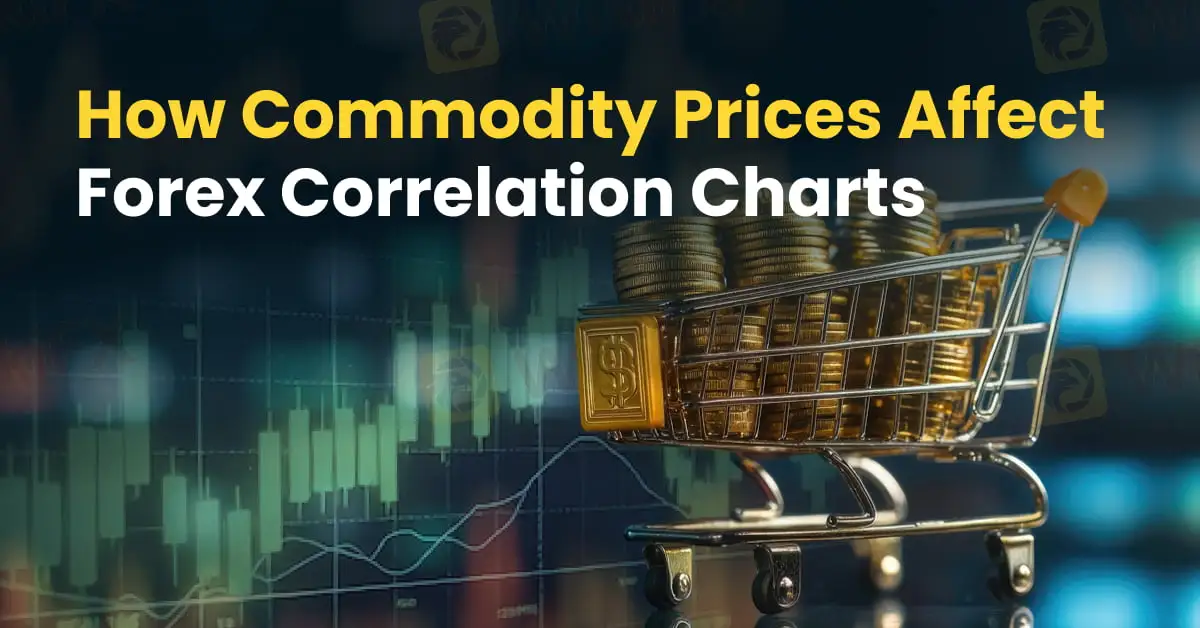简体中文
繁體中文
English
Pусский
日本語
ภาษาไทย
Tiếng Việt
Bahasa Indonesia
Español
हिन्दी
Filippiiniläinen
Français
Deutsch
Português
Türkçe
한국어
العربية
How Commodity Prices Affect Forex Correlation Charts
Abstract:Traders often notice that movements in certain commodity prices, such as gold, oil, and agricultural products, can influence the value of related currencies. This relationship is reflected in forex correlation charts, which measure how currency pairs move about one another over time. Understanding these connections can give traders an edge in making more informed trading decisions.

Traders often notice that movements in certain commodity prices, such as gold, oil, and agricultural products, can influence the value of related currencies. This relationship is reflected in forex correlation charts, which measure how currency pairs move about one another over time. Understanding these connections can give traders an edge in making more informed trading decisions.
What is a Forex Correlation Chart?
A forex correlation chart displays the statistical relationship between two currency pairs, represented by a correlation coefficient ranging from -1.00 to +1.00.
- +1.00 means two pairs move in the same direction 100% of the time.
- -1.00 means they move in opposite directions 100% of the time.
- 0 means there is no correlation.
Commodity prices can significantly influence these relationships.
Commodity-Linked Currencies
Certain currencies are known as commodity currencies because their value is heavily influenced by global demand for specific commodities. Examples include:
- CAD: closely linked to oil prices as Canada is a major crude oil exporter.
- AUD: tied to gold, iron ore, and coal exports.
When commodity prices change, the economic outlook for these countries often changes as well.
How Commodities Impact Correlations
- Oil Prices and USD/CAD
When oil prices rise, the Canadian dollar often strengthens due to increased export revenues, causing USD/CAD to fall. As a result, pairs correlated with USD/CAD—such as EUR/CAD or GBP/CAD—may also see related movements on a forex correlation chart.
- Gold Prices and AUD/USD
Australia is one of the worlds largest gold exporters. Higher gold prices tend to boost the Australian dollar, leading to a stronger AUD/USD. Traders may observe a positive correlation between gold and AUD/USD.
Other Factors That Affect Correlations
While commodity-driven correlations can be strong, they are not fixed. Factors such as geopolitical tensions, shifts in global demand, central bank policies, or supply disruptions can alter the strength and direction of correlations. For example, a global recession may weaken the usual positive link between oil prices and the Canadian dollar if energy demand drops sharply.
Using Forex Correlation Charts with Commodity Data
To make the most of these insights, traders can:
- Track commodity prices alongside forex correlation charts to spot emerging trends.
- Use correlation for confirmation—for example, if gold prices rise and AUD/USD strengthens, this can validate a bullish trade.
Conclusion
Commodity prices can impact currency movements significantly, and their influence is visible in forex correlation charts. By monitoring the interplay between commodities and currency pairs, traders can better predict potential shifts, manage risk, and refine their strategies. In the forex market, understanding these relationships can turn raw market data into actionable trading opportunities.

Disclaimer:
The views in this article only represent the author's personal views, and do not constitute investment advice on this platform. This platform does not guarantee the accuracy, completeness and timeliness of the information in the article, and will not be liable for any loss caused by the use of or reliance on the information in the article.
Read more

KKR Exposed: Traders Allege Fund Scams, Withdrawal Denials & Regulatory Concerns
Do you witness a negative trading account balance on the KKR broker login? Does the broker prevent you from withdrawing your funds after making profits? Do you need to pay an extra margin for withdrawals? These trading issues have become common for traders at KKR. In this KKR broker review article, we have elaborated on the complaints. Take a look!

In-Depth Review of MH Markets Regulation and Compliance Profile – What Traders Should Really Know
This in-depth analysis provides a data-driven examination of the MH Markets regulation and compliance profile. Drawing primarily on verified data from the global broker inquiry app WikiFX, supplemented by public records, we will dissect the broker's multi-jurisdictional licensing, evaluate the real-world protections offered to traders, and interpret the warnings and ratings that define its standing in the competitive forex and CFD landscape.

Valetax vs Taebank Markets — Which Broker Should You Choose?
This article is about the two brokers, Valetax and Taebank Markets.

MH Markets Commission Fees and Spreads Analysis: A Data-Driven Breakdown for Traders
For any experienced trader, the long-term viability of a brokerage partner hinges on a delicate balance of trust, execution quality, and, critically, cost. Trading fees, both direct and indirect, can significantly erode profitability over time. This makes a granular understanding of a broker's cost structure not just beneficial, but essential. This in-depth analysis focuses on MH Markets, breaking down its commission fees, spreads, and other associated costs to provide a clear, data-driven perspective for traders evaluating this broker for their long-term strategies. Drawing primarily on verified data from the global broker inquiry platform WikiFX, alongside other public information, we will dissect the MH Markets spreads commissions cost structure. We aim to move beyond marketing claims and uncover the practical, real-world costs of trading with this broker, helping you determine if its pricing model aligns with your trading style and financial goals.
WikiFX Broker
Latest News
Gratitude Beyond Borders: WikiFX Thank You This Thanksgiving
MH Markets Commission Fees and Spreads Analysis: A Data-Driven Breakdown for Traders
Alpha FX Allegations: Traders Claim Account Blocks, Withdrawal Denials and Security Breaches
How to Become a Profitable Forex Trader in Pakistan in 2025
CFTC Polymarket Approval Signals U.S. Relaunch 2025
Zipphy Exposed: No Valid Regulation, Risk Warning
KEY TO MARKETS Review: Are Traders Facing Withdrawal Delays, Deposit Issues & Trade Manipulation?
FCA Consumer Warning – FCA Warning List 2025
Australia’s Fraud-Intel Network Exposes $60M in Scams
Malaysia’s SkyLine Guide Top 25 Brokers Are Out!
Currency Calculator



